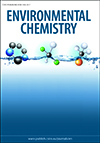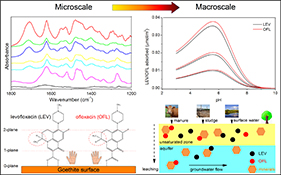Environmental context. Many trace metals, including copper, are only sparingly soluble in seawater and may exist in both dissolved and particulate forms (e.g. as precipitates). Aquatic organisms may experience different toxic effects from exposure to dissolved and particulate trace metals. This study investigates how concentration, reaction time and changes to precipitate composition/mineral formation affect copper solubility in seawater, thus influencing metal bioavailability and toxicity in the field and laboratory.
EN20133 Abstract | EN20133 Full Text | EN20133PDF (497 KB) | EN20133Supplementary Material (394 KB) Open Access Article






